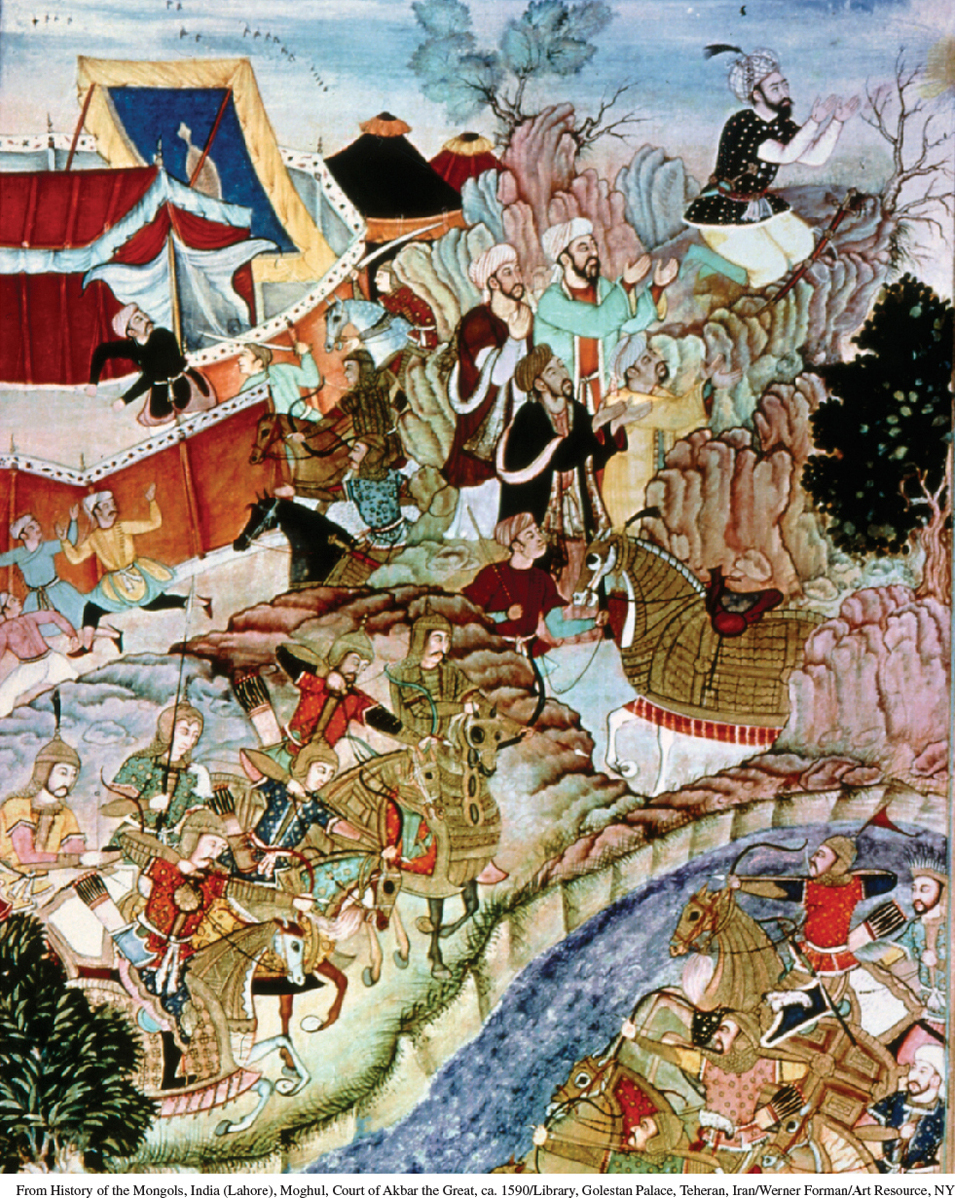Introduction to Chapter 11
CHAPTER 11
Pastoral Peoples on the Global Stage
The Mongol Moment
1200–1450

In late 2012, the Central Asian nation of Mongolia celebrated a “Day of Mongolian Pride,” marking the birth of the country’s epic hero Chinggis Khan 850 years earlier. Officials laid wreaths at a giant monument to the warrior leader; wrestlers and archers tested their skills in competition; dancers performed; over 100 scholars made presentations; traditional costumes abounded. In central London, no less, a large bronze statue of Mongolia’s founder was unveiled for the occasion. For this small and somewhat remote country, seeking to navigate between its two giant neighbors, China and Russia, it was an occasion to express its own distinctive identity. And Chinggis Khan is central to that identity. With his bloody conquests played down, Chinggis Khan is celebrated as a unifier of the Mongolian peoples, the creator of an empire tolerant of various faiths, and a promoter of economic and cultural ties among distant peoples.
The 2012 celebrations marked a shift in Mongolian thinking about Chinggis Khan that has been under way since the 1990s. Under the country’s earlier Soviet-
A ll of this is a reminder of the enormous and surprising role that the Mongols played in the Eurasian world of the thirteenth and fourteenth centuries and of the continuing echoes of that long-vanished empire. More generally, the story of the Mongols serves as a useful corrective to the almost-exclusive focus that historians often devote to agricultural peoples and their civilizations, for the Mongols, and many other such peoples, were pastoralists who disdained farming while centering their economic lives around their herds of animals. Normally they did not construct elaborate cities, enduring empires, or monumental works of art, architecture, and written literature. Nonetheless, they left an indelible mark on the historical development of the entire Afro-Eurasian hemisphere, and particularly on the agricultural civilizations with which they so often interacted.
| A MAP OF TIME | |
|---|---|
| ca. 4000 B.C.E. | Beginning of pastoral economies |
| ca. 1000 B.C.E. | Beginning of horseback riding |
| ca. 200 B.C.E.–200 C.E. | Xiongnu Empire |
| 6th–10th centuries | Various Turkic empires |
| 7th–10th centuries | Arab Empire |
| 10th–14th centuries | Conversion of Turkic peoples to Islam |
| 11th–12th centuries | Almoravid Empire |
| 1162–1227 | Life of Temujin (Chinggis Khan) |
| 1209–1368 | Mongol rule in China |
| 1237–1480 | Mongol rule in Russia |
| 1241–1242 | Mongol attacks on Eastern Europe |
| 1258 | Mongol seizure of Baghdad |
| 1274, 1281 | Failed Mongol attacks on Japan |
| 1295 | Mongol ruler of Persia converts to Islam |
| 1348–1350 | High point of Black Death in Europe |
SEEKING THE MAIN POINT
What has been the role in world history of pastoral peoples in general and the Mongols in particular?